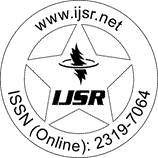Downloads: 126
Research Paper | Agriculture | Kenya | Volume 7 Issue 3, March 2018
Observations from Records on Cattle Dipping for Tick Control during the 2000-2012 Period in Nandi County, Kenya
Yegon M. K. A. | Wanjala F. M. E. | Chepkwony P. K. A.
Abstract: Most of the dairy cattle in Nandi County are found in smallholder farms, where ticks and tick-borne diseases pose challenges to their productivity and survival. Dipping of the cattle in chemical acaricides, on weekly basis, is used to manage the ticks. Examination of the Countys tick control records for the period 2000 2012 revealed that 84.11 % of the registered cattle were dipped in communally-owned and managed plunge dips, while 15.89 % used privately-managed dips. Varying numbers of cattle were dipped annually (266, 178.330, 963), in either chlorfenvinphos, amitraz or synthetic pyrethroid acaricides. The dip-wash tests indicated that 56.36 % of the samples were at the standard dipping concentrations while 38.81 % were under-strength, and 4.83 % over-strength. Anaplasmosis and East Coast Fever were prevalent tick-borne diseases, at 47.74 % and 47.08 %, respectively. Babesiosis and heart water remained low. In conclusion, the plunge dips were prominent tick control facilities, but their use was not consistent with the recommended operating procedures, leading to persistence of tick-borne diseases.
Keywords: Ticks, acaricide, dips, tick-borne diseases
Edition: Volume 7 Issue 3, March 2018,
Pages: 1373 - 1376
Similar Articles with Keyword 'acaricide'
Downloads: 120
Research Paper, Agriculture, Kenya, Volume 8 Issue 7, July 2019
Pages: 1839 - 1841Efficacies of Chlorfenvinphos, Amitraz and Alphacypermethrin Acaricide Combinations on Rhipicephalus (Boophilus) decoloratus Adult Ticks and Larvae, from Cattle in Nandi County, Kenya
Yegon M. K. A [2] | Wanjala F. M. E [2] | Chepkwony P. K [2]
Downloads: 171
Research Paper, Agriculture, Egypt, Volume 7 Issue 12, December 2018
Pages: 142 - 147Comparative Studies between the Locally Formulated Abamectin and Agremic Gold 8.4% SC Using Physical, Chemical and Biological Parameters against Two-Spotted Spider Mite, Tetranychusurticae
Shaymaa A. A. Mohamed | Wahba B. S. | Olfat A. Radwan
